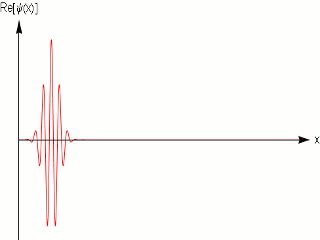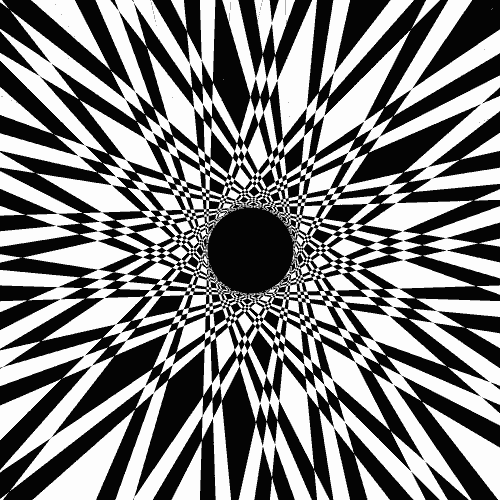Today (January 4, 1961) is the Nobel Prize-winning Erwin Schrdinger Memorial Day, which revolutionized the Schrödinger wave equation in quantum mechanics.

Erwin Schrödinger was born on
August 12, 1887, in Vienna, Austria. His father was Rudolf Schrdinger, and his
mother was Georgine Emilia Brenda. The mother was born in a mixture of Austrian
and English. He learned both English and German at the same time, as Schrdinger
spoke at home. In 1898 he attended the Academies Gymnasium. Between 1906 and
1910 he was educated in Vienna under "Francois Seraphin Exner" and "Friedrich Hasanorl". He
also co-authored experiments with Friedrich Colerauss. In 1911 he became an
assistant to Exxon. In his early days, Schrödinger did several experiments
in the fields of electrical engineering, atmospheric electricity, and
atmospheric radiology, but he always worked with his former teacher, Franz
Edner. He also studied the theory of vibration, the theory of Brownian motion,
and mathematical statistics.

In 1912, at the request of the
authors of a book on electricity and magnetism, he wrote an article entitled
Bipolar Electrochemistry. In the same year, Schrödinger gave a theoretical
estimate of the possible elevation distribution of radioactive material, which
was necessary to explain the observed radioactivity of the atmosphere, and in
August 1913 conducted several experiments at Gehm, confirming his theoretical
assessment and the claim of Victor Franz Hess. For these experiments,
Schrdinger was awarded the 1920 Heidinger Prize by the Austrian Academy of
Sciences. In 1914 the young researcher experimented with pressure formulas in
gas bubbles and studied the soft beta-radiation properties that appear when
gamma rays fall on a metal surface. Finally, in 1919, along with his friend
Fritz Goldrasick, Schrödinger performed his last physical experiment on
coherent light and then focused on theoretical studies.

In the first year of his early
research career, Schrödinger introduced himself to quantum theory by reading
and studying the research of Max Planck, Albert Einstein, Niles War, Arnold
Somerfield, and others. Knowledge of this quantum helped to work on some of the
problems in theoretical physics. But at that time the Austrian scientist
Schrdinger was not yet ready for traditional physics. Schrödinger's first
publications on atomic theory and spectral theory appeared in the early 1920s,
after a personal acquaintance with Somerfield and Wolfgang Pauly, he moved to
Germany. In January 1921, Schrödinger concluded his first paper on the
structure of the Bor-Somerfield effect on the properties of the spectrum caused
by the collision of electrons in alkali metals.


His particular interest in the
theory of relativity led him to become interested in quantum theory. In the
autumn of 1922, he analyzed the electron orbits in a nucleus using methods
developed by the mathematician Herman Weil. This study helped to understand the
geometric properties of quantum orbits and the properties of wave dynamics. In
the same year, he developed the Schrödinger equation of the relative Doppler
effects for spectral lines. This equation is based on the quantum of light and
the concepts of energy and speed. He liked the author's Eichner's view of the
statistical nature of security law. So he wrote the Niles War, Hans Kramers and
John C. Slaughter eagerly accepted the articles. This suggested the possibility
of violating these laws in individual nuclear processes (e.g., in the process
of radiation emission).

Although the experiments of Hans
Geiger and Walter soon became suspicious, the idea of energy as a statistical
concept fascinated Schrödinger for a lifetime, which he discussed through some
reports and publications. On April 6, 1920, he married Annemarie (Annie)
Bertley. Schrdinger suffered from tuberculosis. He stayed at a health home in
Aroza several times during the 1920s. That’s where he developed his wave
equation. In January 1926, Schrödinger published a paper on wave mechanics
entitled "Quantumization is an Egan Value Problem" in the scientific
journal "Annalen de Physics" for physics. Now given that the Schrödinger
equation. In this article, he gave a "classification" of the wave
equation for time (non-time) systems. It gave the exact energy egon values
for atom-like hydrogen. This article is celebrated worldwide as one of the
most important achievements of the twentieth century. And has created a
revolution in most quantum mechanics and indeed in physics and chemistry.

The second article (paper) was
submitted four weeks later. In which he gave results for the problem of quantum
uniform oscillation, solid vortex and two atomic molecular problems. Schrödinger
also gave a new classification for the equation. A third paper, published in
May, provided the equation for Heisenberg's approach and the results for the
Stark effect. In the fourth paper in this series, he explained how to deal with
time-changing issues similar to the ones scattered around. In this paper, he
also introduced a complex solution to the wave equation to prevent the
occurrence of fourth and sixth order difference equations.


He is best known for his
contribution to quantum mechanics. He was also awarded the Nobel Prize in
Physics in 1933 for his development of the Schrdinger equation. He has received
the Max Planck Medal (1937), the Erwin Schrdinger Prize of the Austrian Academy
of Sciences (1956), and the Austrian Decoration Award for Science and Art
(1957). In 1949 he was elected a foreign member of the Royal Society (ForMemRS).
Erwin Schrdinger, who revolutionized the Schrödinger wave equation, passed away
on January 4, 1961, at the age of 73 in Vienna, Austria.
Source By: Wikipedia
Information: Dr. P. Ramesh, Assistant
Professor of Physics, Nehru Memorial College, Puthanampatti, Trichy.
Get information like this
https://t.me/joinchat/jpqj3jQLN51kYTk9
Join Telegram Group.
https://chat.whatsapp.com/FisIzCe4Br2CRgxAiicUnf
Join WhatsApp Group
Thanks.
Also, Read
🛑👍 CSIR-NET Physics Materials and Problems
🛑📕 21 GB and Hundreds of Physics E-Books Collection.
🛑🛥️ How does an Electric Motor work? (DC Motor).
🛑🤹♂️ Science Academies' Summer Research Fellowship Programme for Students and Teachers 2022.
🛑🔌 How does a Transformer work - Working Principle electrical engineering.
🛑🎙️ Transistors Explained - How transistors work.
🛑🔥⚡ How Thermocouples Work - basic working principle.
🛑🔌 Voltage Explained - What is Voltage? Basic electricity potential difference
🛑🔌 What is CURRENT– electric current explained, electricity basics.

.jpg)

No comments:
Post a Comment